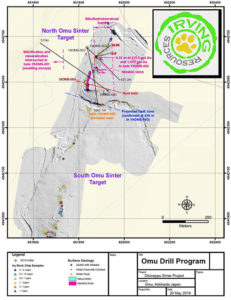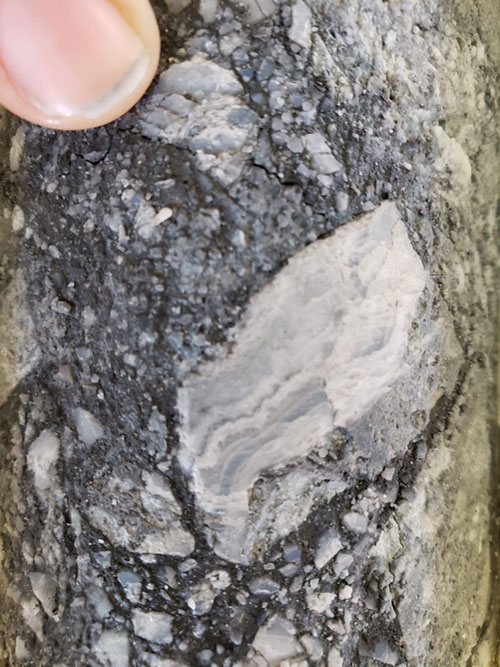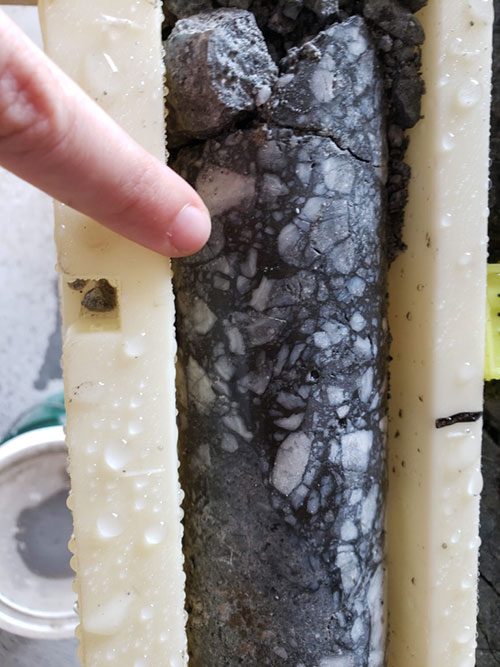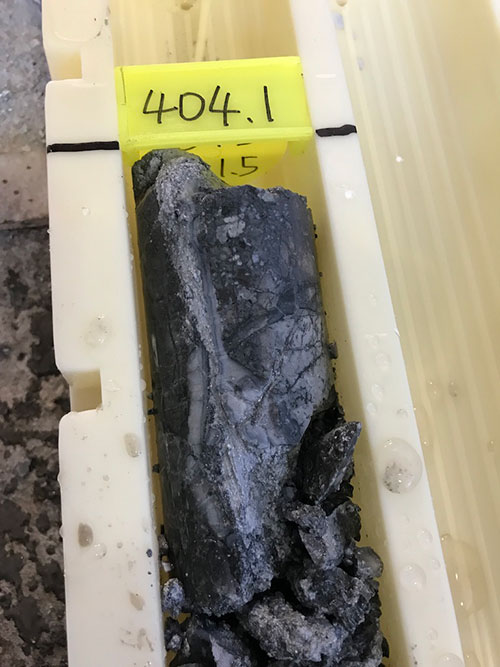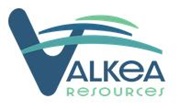Irving: Latest Drilling Update
Irving Resources just released an update on the drilling at the Omu Sinter target in Hokkaido, Japan. No additional assay results were released but core visuals from hole #3 have now been uploaded to the Photo Gallery on the company website. We learned that hole #3 had deviated from its intended path and only barely hit the main mineralized trend. It did however confirm the presence of another cross-cutting structure.
There were a lot of addiotional news items and I would summarize the contents of the news release as follows:
- Hole #3 is complete but did not fully intersect the target due to the drill bit drifting to the west
- Hole #3 confirmed the presence of a cross-cutting, West-East structure
- Intensity of pyrite in hole #3 was particularly high immediately before encountering the cross structure (a fault)
- Core from hole #3 contained banded vein fragments (ginguro), intensely silicified vein breccia and dark grey quartz veins
- Sampling of hole #1 has been delayed until saw blades capable of cutting the intensely silicified rocks encountered in the top of the whole can be sourced
- Core samples from hole #2 have been shipped to ALS Global, Australia, for analysis and assay results are expected in early June
- A new hole (hole #4) has been collared approximately 140 m south-southwest of hole #3 and is designed to fully cut the projected north-south trending mineralized zone which included the high-grade vein encountered in hole #2
- Irving has decided to undertake a loop electromagnetic (“EM”) survey that should highlight structures and sulfide mineralization at Omu Sinter and will be carried out by Irving’s lead exploration contractor Mitsui Mineral Development Engineering Co., Ltd (“MINDECO”). Results are expected by late May and will be utilized for further drill planning at Omu Sinter
- With technical assistance from newmont Goldcorp and help from MINDECO, Irving is planning to undertake a controlled-source audio-frequency magnetotellurics (“CSAMT”) survey at each of its three main target areas, Omu Sinter, Omui mine and Hokuryu mine, in a few weeks. This is for mapping sub-surface structures that might host vein mineralization and can measure contrasts to depths of +500 m. Results are expected by mid-year and will help with drill targeting at all three locations.
Horseman’s comments
The Good:
- The mineralized structure extends from hole #1 and #2 to #3.
- Banded vein material (“Ginguro”) is present within the relatively narrow core interval that was able to hit the main mineralized structure in hole #3
- Intensely silicified vein breccia and dark grey quartz veins were also encountered in hole #3
- Intensity of pyrite was particularly high in proximity of the cross-cutting structure
- I assume that possibly means overlapping mineralization episodes (More hydrothermal fluids)
- The “EM” survey should have results ready in late May which will help with drill targeting at Omu Sinter
- Assays from hole #2, which contains sporadic vein fragments over a relatively long interval, are expected to be back in early June
- “CSAMT” surveys will be done at all (currently known) main targets located within the greater Omu Project area
The bad/neutral(?)
- Hole #3 deviated and did not fully intersects the targeted mineralized trend
- No biggie since it only means that this particular hole didn’t fully test the trend
- The cross-cutting west-east structure appears to have displaced the system following emplacement
- A fault basically split the mineralized trend and “re-located” the extension of the mineralized trend
- I assume this is why the plan map in the news release has the area north of the fault labeled as “North Omu Sinter Target” and the area south of it labeled as “South Omu Sinter Target”
- I am unsure what the net impact is in terms of the mineralized trend being displaced and the possibility of additional mineralized fluids from a second structure/event
- Assays from hole #1 will be delayed until better saw blades are on site
- No biggie since it only means we need to wait a bit longer for assay results
Personal Thoughts
I’m obviously very happy to see evidence that the strike of the mineralized structure continues to grow with hole #3 and especially that intensely silicified vein breccia has been encountered. Intensely silicified rock points to a lot of hydrothermal fluids being pumped through the rock, which hopefully were precious metal bearing and deposited some of its cargo in these breccias. As far as I understand: The uglier the rock, the more the rock was impacted by hydrothermal fluids. Furthermore, the presence of finely banded (“Ginguro”) vein fragments is very positive since it is what usually contains the high-grade stuff in these types of system. The fact that hole #3 drifted and did not fully intersect the main structure is a nuisance but of course means nothing in terms of affecting the fundamentals. The apparent fault and displacement of parts of the mineralized trend is the most intriguing detail in my eyes. The increase in pyrite close to the fault is very positive, but again, if the potential increase in mineralization events makes up for the extra hassle of a displaced portion of the system is something I personally just don’t know (I’m no geo after all!). With all that said, exploration is a process and each hole leads to more information, which leads to more efficient exploration. We already know there is high-grade gold and silver bearing material underneath Omu Sinter and there is lots of drilling to be done over the coming months and years!
Slides from the News Release
- New plan map:
… Note a) the increased strike which has been more or less confirmed by hole #3, b) the intended path of hole #4, c) the location of the cross-cutting structure, and d) the added “North Omu Sinter Target” and “South Omu Sinter Target”.
- Vein breccia from hole #3 which includes finely banded “Ginguro” type material:
- Intensely silicified vein breccia with quartz vein fragments floating in dark grey, pyrite-rich silica:
- Dark gray quartz vein cutting sulfidized rhyolite and breccia:
… That vein looks banded to me. Not many bands perhaps, but banded none the less.
Closing Thoughts
Irving has just begun to prove up the very first of at least three targets and given the fact that we got high-grade gold and silver values from the second ever hole, with only a 7m interval being tested so far, I would say that we are already spoiled. What the upcoming assay results from the broader intervals in hole #2 will say, I have no idea. With that said I am cautiously optimistic that some intervals will show some decent amounts of gold and silver at least. Irving will learn a lot from each and every upcoming hole and we have no idea where the best or worst parts of the system is, but that is what exploration is all about. To learn from every endeavor and get a better and better understanding of the system overall.
(Note: This is not investment advice. Always do your own due diligence. I own shares of Irving Resources and am thus biased.)
Best regards,
The Hedgeless Horseman
Follow me on twitter: https://twitter.com/Comm_Invest
Follow me on CEO.ca: https://ceo.ca/@hhorseman



